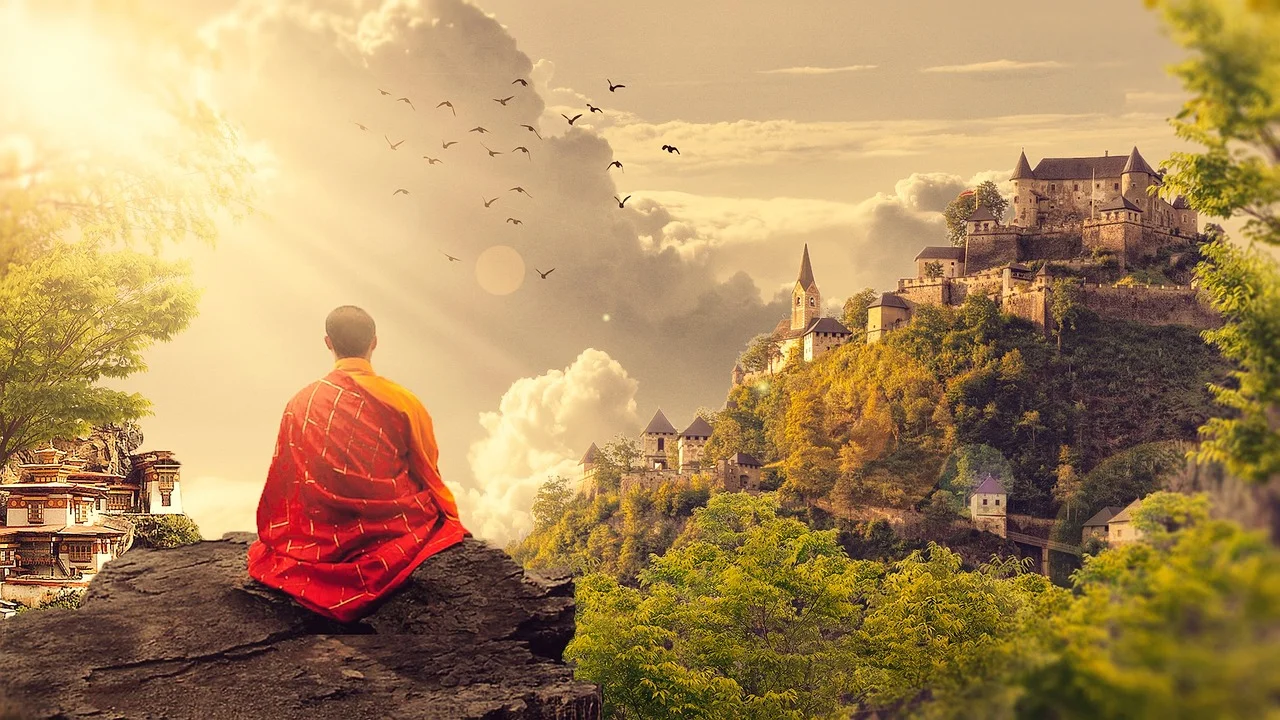Storytelling has always been a way for people to explore the mysteries of existence. Whether in sacred texts, folklore, or modern cinema, tales of faith and devotion reveal how deeply spirituality is woven into the human experience. Films often serve as mirrors for these universal themes, showing that no matter where people are born, certain spiritual ideas transcend borders and cultures.
Shared themes in world religions and films
One of the most striking aspects of spirituality is how often the same themes emerge in different places. Ideas about life after death, divine justice, or the presence of unseen forces appear in religious traditions worldwide. From Hindu reincarnation stories to Christian narratives of resurrection, these concepts highlight a common search for meaning.
Cinema, with its global reach, has embraced these themes repeatedly. Movies such as The Seventh Seal or Coco use visuals and narrative to examine death not as an end, but as part of a spiritual journey. By blending cultural references with universal questions, such films resonate with audiences far beyond their original setting.
Death as a universal guide
In many societies, death is personified as a guide or guardian rather than simply a final event. This perspective is seen in European folklore, Latin American traditions, and Asian spiritual practices. The figure of death often takes on a symbolic role, reminding people of the fragile balance between life and mortality.
Filmmakers have tapped into this imagery time and again. Characters like the Grim Reaper or guardian spirits are used to challenge protagonists, forcing them to confront their fears and values. These depictions echo real-world beliefs, showing how spiritual archetypes cross cultural and geographical lines.
Rituals of remembrance
Practices of honoring the dead further demonstrate the shared human approach to spirituality. In Japan, the Obon Festival celebrates ancestral spirits through lanterns and family gatherings. In Mexico, Día de los Muertos fills streets with color, music, and offerings to loved ones. Despite differences in detail, the core message is the same: remembering those who have passed keeps their presence alive.
Cinema captures these rituals vividly. Coco introduced international audiences to Mexican traditions, while Japanese films like Departures delicately portray the role of ritual in processing grief. These stories show that remembrance is not confined to one culture but represents a universal spiritual need.
The search for justice through higher powers
Across cultures, people have prayed to unseen forces for justice when human systems fail. This longing for fairness manifests in prayers, chants, or ceremonies designed to restore balance. In spiritual traditions, divine justice often comes through figures who protect the marginalized or punish wrongdoing.
Film narratives reflect this desire as well. Superhero stories, while modern in form, echo ancient myths where gods or chosen figures intervene against corruption. The hero’s role often mirrors the function of divine protectors in folklore, suggesting that the yearning for justice is as much spiritual as it is social.
Cultural fusion in modern spirituality
Globalization has made spiritual practices more visible and accessible than ever before. Traditions once confined to specific regions now inspire people worldwide. Yoga, rooted in Hindu philosophy, is practiced in nearly every country. Meditation techniques from Buddhism are embraced across secular and religious settings.
Some spiritual figures, once local, have entered broader awareness. One example is Santa Muerte, venerated in Mexico but increasingly recognized abroad. Her prayers for protection, love, and success highlight the way spiritual devotion adapts to modern life. For those curious to explore these practices further, you can read more here.
Films as vehicles for spiritual dialogue
Movies have become one of the most powerful ways to share spiritual beliefs across cultures. Unlike books or rituals that may remain confined within a community, films are distributed globally and subtitled into dozens of languages. A spiritual concept presented in a local film can quickly become part of international conversation.
Consider how martial arts films often incorporate Taoist or Buddhist philosophies, teaching lessons about balance, humility, and discipline. Similarly, Native American spirituality has reached global audiences through documentaries and dramas that explore the connection between humans and nature. These films encourage audiences to reflect on their own beliefs, even if the cultural context is unfamiliar.
The role of myth and legend
Mythological tales, often rooted in spiritual tradition, serve as a common language across civilizations. Stories of gods, heroes, and cosmic battles appear in Greek, Norse, Hindu, and other pantheons. Modern cinema borrows freely from these traditions, transforming them into global blockbusters.
Movies like Clash of the Titans or the Marvel adaptations of Thor draw directly from mythological roots, while others reinterpret spiritual archetypes in new ways. These stories endure because they touch upon timeless concerns: the struggle between good and evil, the quest for meaning, and the role of fate in human life.
Spirituality as personal experience
Beyond rituals and doctrines, spirituality often centers on deeply personal experiences. People across the world report moments of insight, comfort, or connection that transcend cultural boundaries. Whether during prayer, meditation, or even while watching a film that moves them, these experiences reveal how spirituality is as much individual as collective.
Filmmakers frequently explore these moments of personal awakening. Characters may undergo visions, dreams, or encounters with forces beyond themselves, representing the universal human capacity for transcendence. Such stories remind viewers that spirituality is not confined to institutions but can emerge in everyday life.
Why these beliefs resonate universally
The persistence of spiritual themes across borders reflects humanity’s shared concerns. Everyone grapples with mortality, longs for justice, seeks guidance, and hopes for connection. Spiritual beliefs—whether expressed in ancient rituals or contemporary films—offer frameworks for understanding these universal challenges.
Cinema amplifies these frameworks by weaving them into narratives that entertain, inspire, and challenge. Through film, viewers encounter beliefs far from their own yet recognize the familiar hopes and fears behind them. This recognition bridges differences, showing that while rituals vary, the essence of spirituality is shared.
